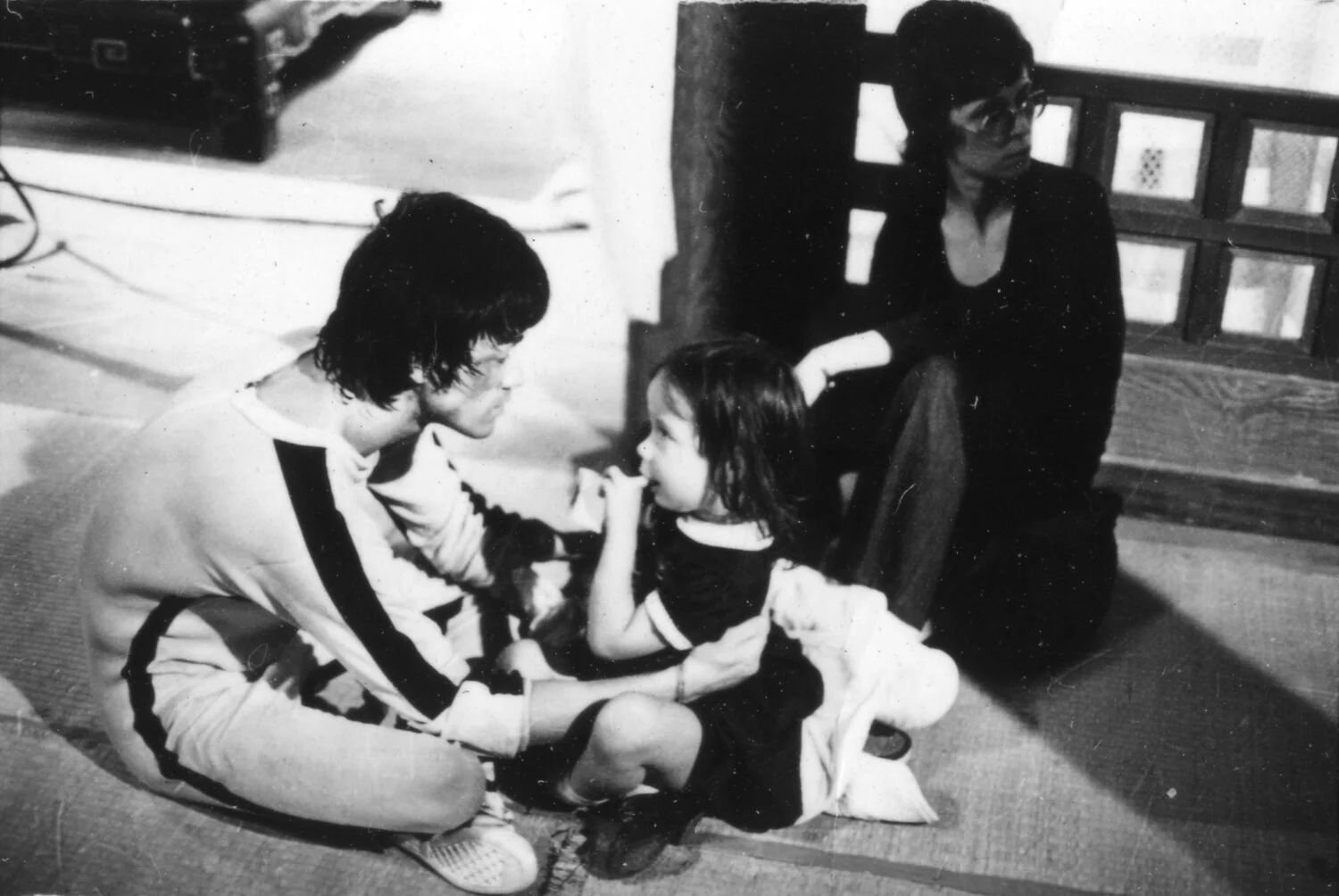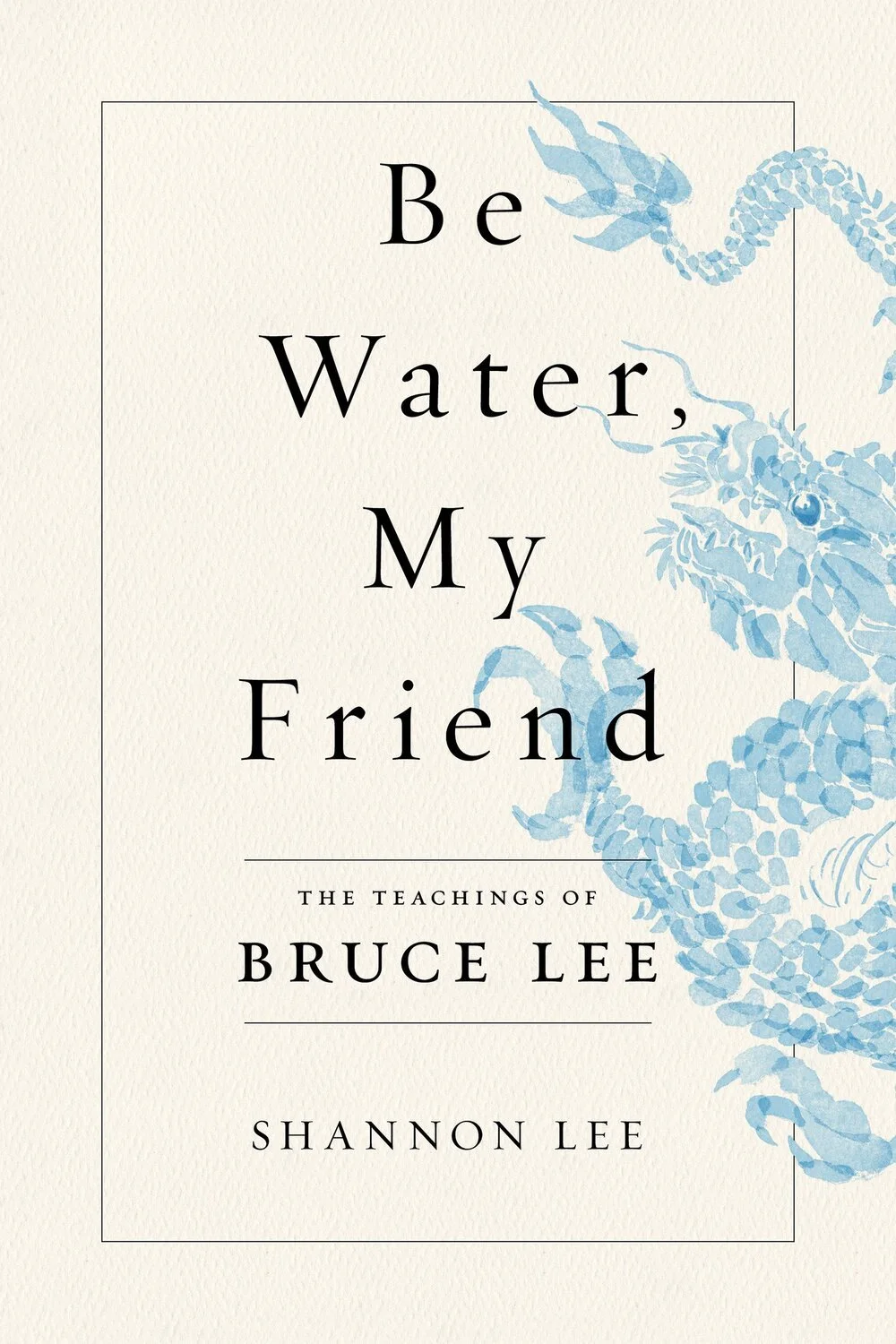How “Bruce Lee’s Daughter” Is Expanding Her Own Legacy
Hapa Mag - DECEMBER 9, 2020
By Olivia Truffaut-Wong
Shannon Lee
Shannon Lee is her father’s daughter. As the executor of Bruce Lee’s estate, CEO of the Bruce Lee Family Company, and founder and CEO of the Bruce Lee Foundation, she has spent the last two decades working to uphold her father’s reputation as one of the foremost Asian stars in Hollywood, as well as a martial arts icon and beloved philosopher. But Shannon is also her own person, and a big part of her identity is being Hapa.
“I do identify as Hapa,” she tells me over the phone — her mother, Linda Lee Cadwell, is white. “For me, what it means to be Hapa [is] the notion that I have this diverse mix of cultures and background and DNA and ancestry,” she continues.
“[Being Hapa] has, at times, had me feel a bit like, ‘Oh, well, I don’t 100% fit in anywhere,’” she admits. On the other hand, she adds, “It has given me the strength to say, ‘Well, then I belong to myself.’ And because I am agreeing to belong to myself, then I belong wherever I want to be.” And just like that, she went from sometimes feeling like she belonged nowhere, to belonging everywhere. “If I’m comfortable in my own skin and I’m comfortable in the space I’m inhabiting, then that’s all that matters. I get to occupy that space and I get to have that sense of belonging wherever I find myself.”
When I tell her that I’m jealous of that realization, she laughs, assuring me and all other Hapas out there that this sense of self isn’t something one achieves overnight, or without constant practice. In fact, over the course of our conversation, it becomes obvious that Shannon’s security in her own identity is something she’s worked at for years.
Growing up the Hapa daughter of arguably the most famous Asian in the United States, Shannon’s identity didn’t always feel like her own to determine, especially as a young actor in her 20s, auditioning for “straight-up Asian characters.” While being Bruce Lee’s daughter allowed her to experience being “accepted by Asian culture because of the love that they have for my father,” it also made auditions an immediate referendum on her ethnicity. “Because that part of my identity is so big, I have people who can’t see anything else,” she explains, recalling being met with a kind of incredulity. “I would walk in the room and they would say, ‘You don’t look Asian.’” And then, afterward, “‘But Bruce Lee’s daughter is Asian!’”
If the constant questioning of her ethnicity bothered her at the time, Shannon doesn’t spend time dwelling on it. Recounting instances of being told “You were really good, but we need someone who’s Chinese looking,” she speaks with acceptance, and then, even grace. “I was fortunate to be auditioning. I was fortunate to get the parts that I did get,” she says, adding that, while she “wanted every part” she auditioned for, it wasn’t “enough that I’d wished I was someone else or somehow different.”
Bruce in yellow jumpsuit, cross legged with Shannon in his arms, smiling Linda sitting nearby. On set of GOD, pagoda. Courtesy of the Bruce Lee Family Archive
Now, 20-odd years later, Shannon seems fully comfortable living outside of the boxes Hollywood casting directors wanted her to inhabit back then. She is a proud Hapa, but more than that, she’s established her own identity that cannot be defined by the simple phrase “Bruce Lee’s daughter.” Though crafting that identity while simultaneously consumed by preserving her father’s legacy has been a challenge.
When she first took on the role of running her father’s estate, Shannon says, she had a lot of “cleanup work” to do to establish how she wanted to run the business that is her father’s legacy. “I loved the creative challenge of it. I loved the philosophy, and I was always trying to push that forward more in everything we were doing,” she insists. “But I don’t think I was thinking about myself as much during the first, almost two decades.”
However, in the past few years with projects like Warrior, she’s stepped forward to build her own legacy in tandem with that of her father. “I’m starting to be more creative and know myself better,” she explains, pointing specifically to Warrior, a show based on Bruce Lee’s writings which she produces. “Stepping into that creative role [as a producer] and bringing a TV show to life is thrilling for me.” Yes, it’s a project under the Bruce Lee umbrella, but it was Shannon who made it a reality.
Warrior premiered on Cinemax in 2019, and is wrapping up its second season in December 2020. The future of the show is unknown — it hasn’t been picked up for a Season 3, and Cinemax has recently sworn off original content, meaning that its only hope is to be picked up at another network or streaming service — but it remains a prime example of how Shannon is molding her role in her father’s estate to better serve her own creative visions. Speaking of some of the backlash Warrior received early on for its portrayal of Asian women — two main characters Ah Toy (Olivia Cheng) and Mai Ling (Dianne Doan) are introduced as sex workers and concubines — the producer confirms she and the creative team behind the show took great care in making sure the female characters in Warrior weren’t mistreated. “We wanted the show to be stylish and entertaining and fun and powerful. We actually worked quite hard, and knew that the plan was, over time, that the characters, including the prostitutes, would start to develop their own stories,” she explains.
In fact, making sure the female characters grew beyond stereotypes was a top priority for Shannon. “When we were reading the scripts, anytime I felt like any of the women were being stereotyped or marginalized in some way, I [would suggest an alternative],” she says. “We wanted them to be complex and strong characters. So, I definitely saw that as part of my role.”
Most recently, she has expanded her legacy from TV producer to author with her new book, Be Water, My Friend: The Teachings of Bruce Lee. The book breaks down one of her father’s most famous philosophies and quotes: “Empty your mind, be formless, shapeless — like water. You put water into a cup, it becomes the cup. You put water into a bottle, it becomes the bottle. You put it in a teapot, it becomes the teapot. Now water can flow or it can crash. Be water, my friend.” To Shannon, this partly means that one should be more conscious of how they think and what they feel. “We need to take a little bit more care in directing the course of our thoughts and mastering ourselves,” she explains.
As 2020 comes to a close, Shannon’s interpretation of her father’s teaching is a bit more straightforward. “I feel like our cups are a little full at the moment [with information, and judgments],” she says. “Let’s just keep emptying out all those preconceived ideas and thoughts and worries and deal with what’s happening right now, and make as much room for greater possibility in every moment.”
It’s certainly a lesson Shannon is taking to heart. Looking back at her career and her relationship to her father’s, it’s almost like looking at a river going into the sea. She has spent decades continuing the flow of her father’s legacy, and now she’s expanding beyond, into a sea of her own making.
Olivia Truffaut-Wong is a movie and TV obsessed writer and editor who loves to spotlight Asian voices in Hollywood. She can be found in many corners of the internet, and is most likely currently marathoning a Netflix show with her cat, Minou, by her side. You can find her on Twitter and Instagram @iwatchiam.



